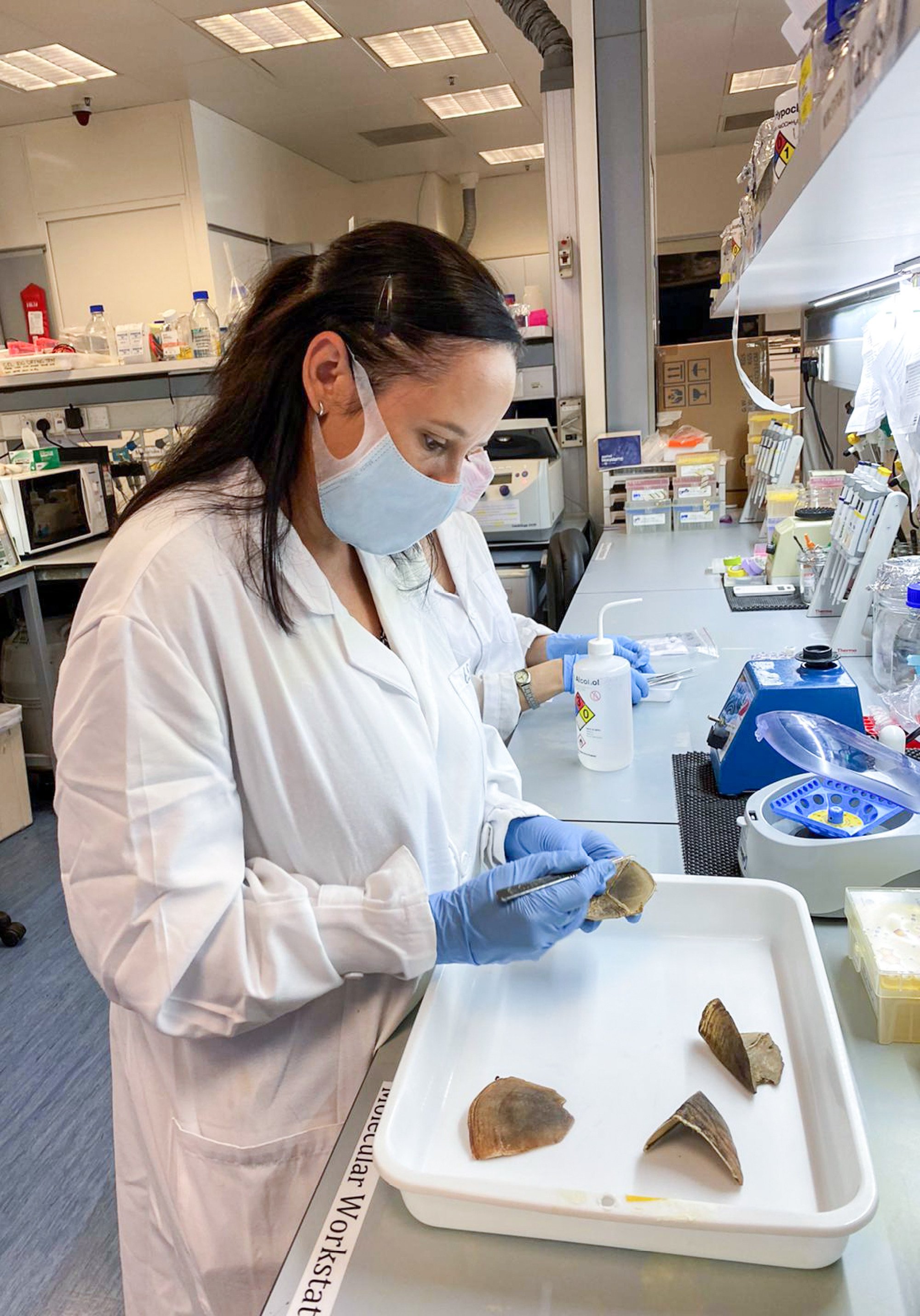An international team of scientists say they have developed a new method to identify the origin of pangolin scales, adding to the toolkit for cracking down on the poaching and trafficking of the endangered animal, which is prized in China.
The researchers found that poaching activity shifted from West to Central Africa from 2012 to 2018 as the Asian pangolin population shrank, with Cameroon’s southern border emerging as a poaching hotspot.
The team said the shift could be a response to increased enforcement, declining pangolin populations in West Africa or convenient new trade routes.
Do you have questions about the biggest topics and trends from around the world? Get the answers with SCMP Knowledge, our new platform of curated content with explainers, FAQs, analyses and infographics brought to you by our award-winning team.
They also identified Nigeria as the highest-volume transit hub in Africa, where traffickers gather pangolin scales and then ship them overseas, according to maps of African pangolin seizures.

China is the largest market for pangolin scales, which are in high demand for use in traditional Chinese medicine despite no evidence of their efficacy, according to a paper by the researchers published in the peer-reviewed journal Science on Friday.
The team came up with a genetic test that can identify the precise geographic origins of confiscated pangolin scales – an innovation they say could reduce the lag time between intercepting wildlife products, tracing the supply chain and enforcement.
“This approach can dynamically guide preventive efforts by revealing poaching hotspots, representing an important step forward in conserving this highly trafficked species,” they said.
The research team comprises 39 scientists in Belgium, Britain, Cameroon, mainland China, the Czech Republic, Gabon, Hong Kong, Nigeria, Russia, South Africa and the United States.
Beijing banned the hunting of pangolins in 2007 and outlawed imports of the animals and their by-products 11 years later.
In 2020, the Chinese government upgraded its legal protections for pangolins to the highest possible level. The National Forestry and Grassland Administration said the move was necessary to “crack down on the illegal hunting and trading of wild animals and related products”.
That same year, references to pangolins and their body parts were removed from an official Chinese compendium of medications.
Without specifying the number of the animals, the forestry administration said in September that pangolins had been spotted in the wild in the Chinese provinces of Guangdong, Fujian, Hainan, Jiangxi and Zhejiang.
China ranks as top rhino horn market, but smuggling networks weakened: report
In the new study, the researchers said smugglers had turned to importing African pangolins to meet demand as populations of Asian pangolins declined. The white-bellied pangolin, which lives in West and Central Africa in an area stretching from Guinea to Zambia, has consequently become the most trafficked mammal in the world.
The scientists analysed more than 650 white-bellied pangolin scales that had been seized by Hong Kong authorities. The samples were selected from a total of 38 tonnes (42 tons) of scales – harvested from at least 105,000 dead pangolins – that arrived between 2012 and 2018.
Genetic analyses and data from seized pangolin products showed that the samples were harvested in southern Cameroon, Equatorial Guinea and Gabon and collected in Nigeria. They were then transported to destinations in Southeast Asia, often by sea, and ultimately sold in southeastern Chinese provinces, particularly Guangdong and Guangxi Zhuang autonomous region.
China hits back at US claims it is putting pangolins at risk
Lead author Timothy Bonebrake, a professor at the school of biological sciences at the University of Hong Kong, said while scientists had previously been able to identify a pangolin species from its scales based on genetics, the new method allowed them to pinpoint the geographic origin of the animals. This could give crucial insights into the impacts on the animals and guide resource allocation for conservation efforts.
“When they are hunted, typically local communities or maybe [people from] nearby cities will consume the meat for food. They will take off the scales and accumulate them,” he said.
“Once there are enough scales, they are often shipped to a central location and then often they are shipped to Asia in large shipments.”
Bonebrake said the new tool could provide information on a sample’s origins within a week of testing.
“It is like a crime show. If you find DNA evidence at a crime scene, and if the criminal is not in a database, the DNA profile will not match anyone,” he said.
“Thanks to our African collaborators, we now have the database. When we have a scale in Hong Kong, we can run the DNA sequence, use the database to get the match and know where it came from.”
He said that with greater legal protection put in place in 2020 and speculation about links between the coronavirus and pangolins, more studies would be needed to understand how the market in China had been affected.
More from South China Morning Post:
- China hits back at US claims it is putting pangolins at risk
- China briefs European envoys on WHO coronavirus origin quest
- While animal origin of Covid-19 remains a mystery, will revised law in China help prevent more diseases jumping from wildlife to people?
- China ranks as top rhino horn market, but smuggling networks weakened, report finds
- China crackdown on ivory trade deters smugglers, Hague report finds
For the latest news from the South China Morning Post download our mobile app. Copyright 2023.





